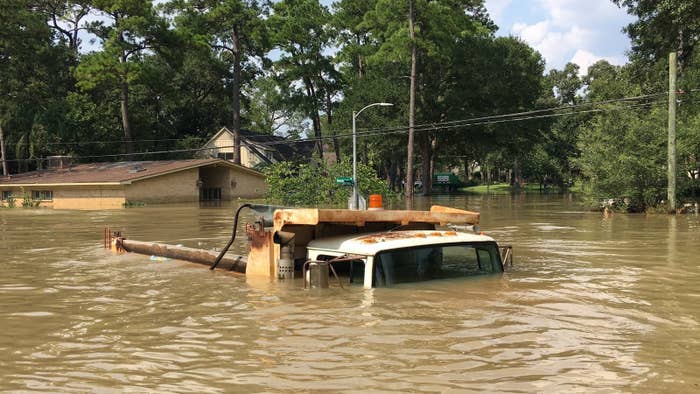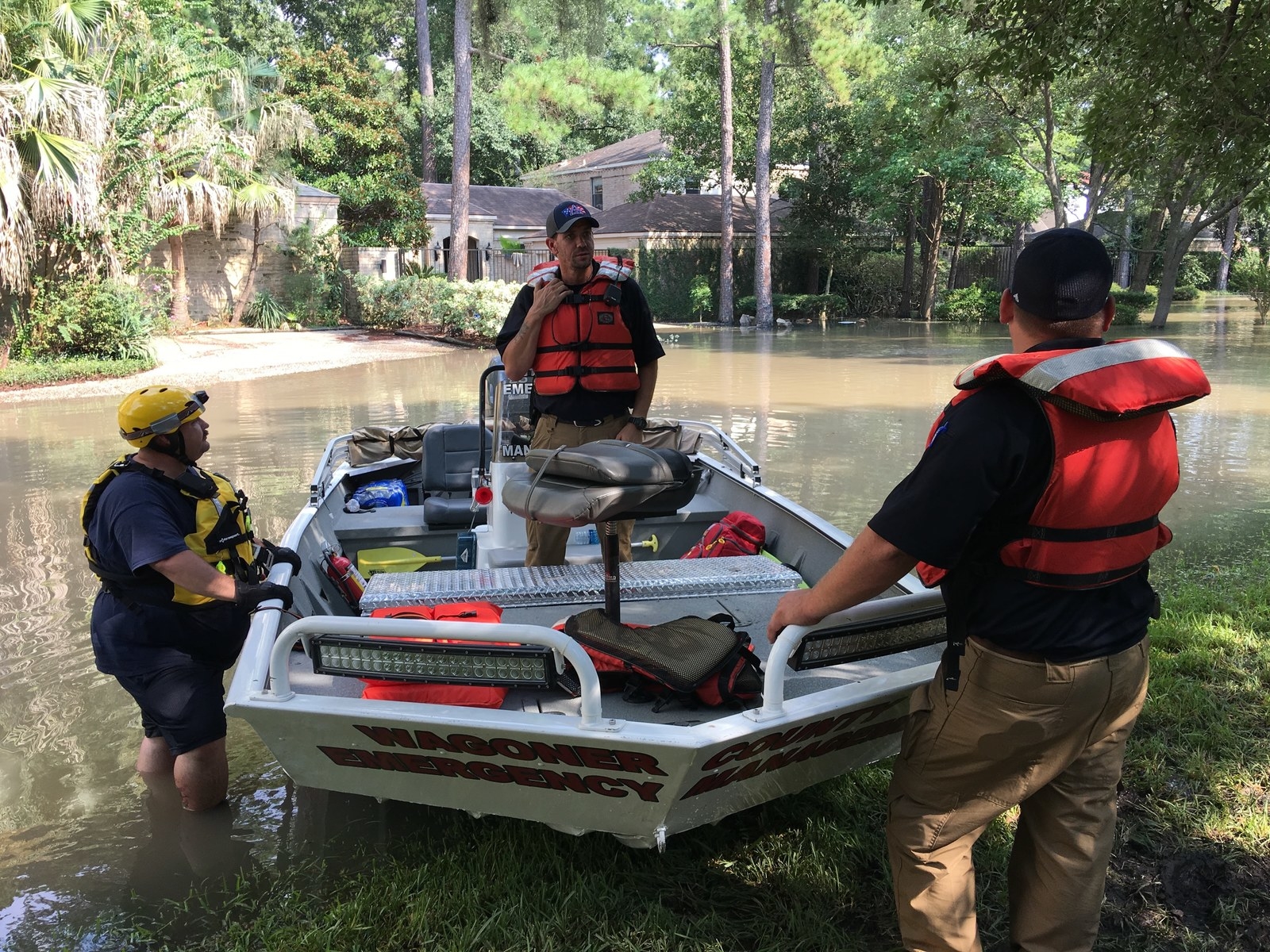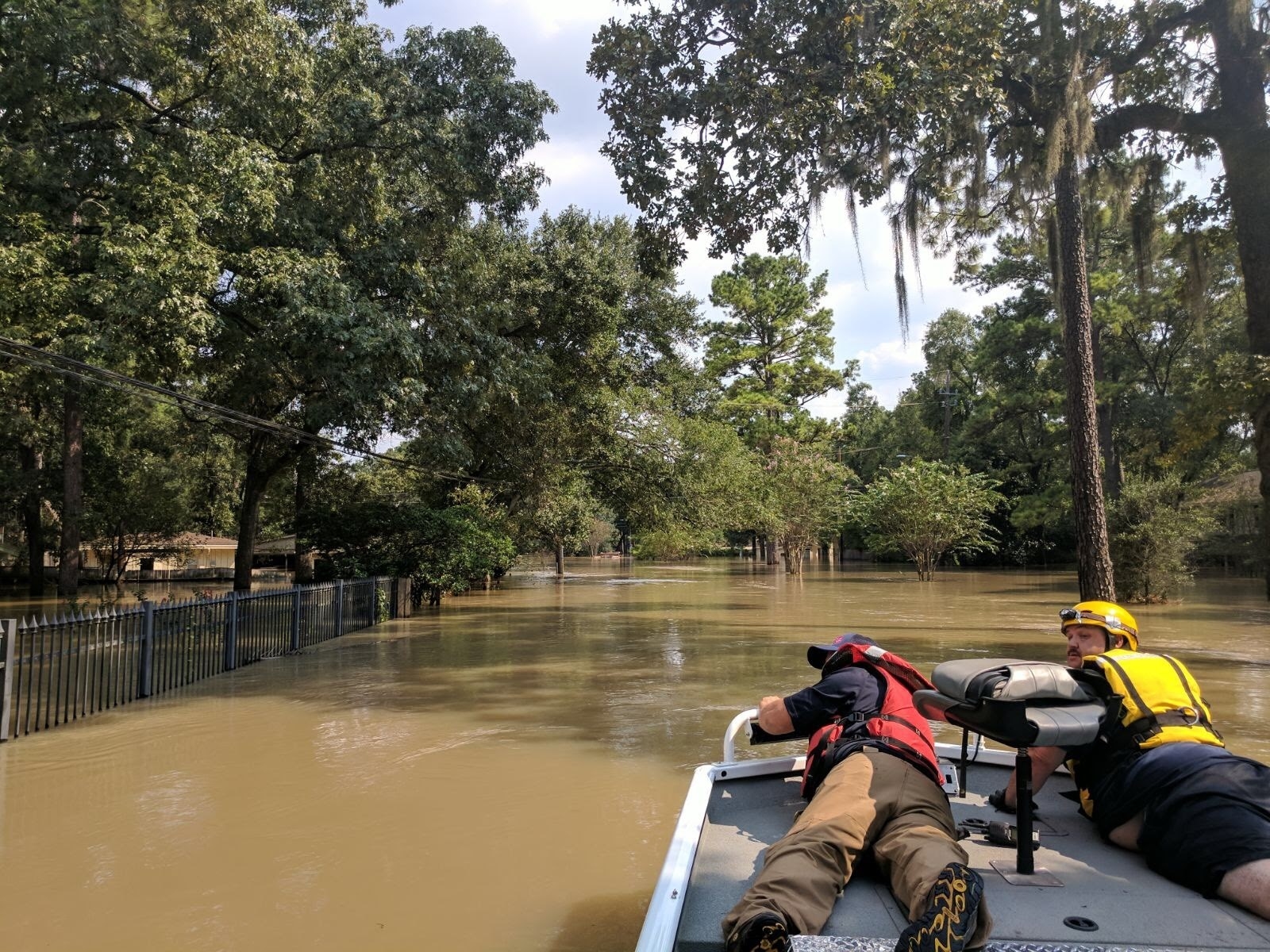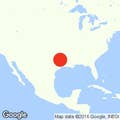
HOUSTON — About 10 minutes after shoving off in a boat and motoring through the flooded streets of west Houston, Doug Hunter took one hand off the steering wheel and pointed to a swirling patch of muddy water.
"There's a car underneath there," he shouted over the chugging engine. "Can you see it? Can you see it?!"
The water was so deep and muddy only a brown stew of dirt and debris could be seen from above. But Hunter, a captain in the Wagoner County Department of Emergency Management, somehow did spot it and safely swerved around the submerged obstacle — as he would a dozen more times Friday while patrolling streets that remain under several feet of water a week after Harvey struck.
Hunter is part of a multitude of professional first responders who have descended on Texas in recent days to rescue stranded residents and patrol flooded neighborhoods. They hail from all over the country, including Oklahoma, which sent Hunter's team as part of the state's Task Force 1. Wagoner County Deputy Jeff Halfacre, who was part of Friday's patrol, told BuzzFeed News the task force was there at the request of Texas Emergency Management.

Teams like the one from Oklahoma have played a pivotal role in the government's response to Harvey, filling in the gaps left by local agencies that were overwhelmed by the storm's magnitude. Their ongoing presence — Hunter's team arrived Wednesday — also highlights the fact that while Harvey's wind and torrential rain have subsided, the remaining water has left Houston in a state of ongoing crisis without a fixed end date.
"We’ll do whatever’s needed until they call the event over," Hunter said when asked when teams like his might head home.
And in the case of the team from Wagoner County, most of the members are working completely for free.

Friday afternoon, Hunter and a team of three other officials were tasked with searching for residents in trouble and patrolling the winding streets off of Houston's Gessner Road. The neighborhood, dotted by large homes and Spanish moss-draped trees, remains flooded after the US Army Corps of Engineers was forced to release excess water into the Buffalo Bayou, which runs through the area, from a pair of reservoirs upstream.
Houston Mayor Sylvester Turner said Friday that the releases could continue for 15 days, prompting him to issue a voluntary evacuation order for the area.
The high water makes patrolling the area a dangerous task. In addition to dodging submerged, cars, debris, street signs, and fire hydrants, Hunter's boat also had to contend with a powerful current Friday.
"Do you see that area over there?" Mark Wilson, also with Wagoner County Emergency Management, asked while passing an area of rippling water. "The surface looks relatively calm, but there's a powerful undercurrent."
On top of that, the water itself is effectively toxic; a recent analysis found E. coli levels that were more than 125 times higher than the amount authorities recommend for swimming water. Much of the water has a pungent, swampy odor and sometimes smells like sewage or gasoline.
"There’s the biohazards in the water," Hunter said, pointing at Brad Ashton, a member of the team trained to launch the boat. "If he gets cut on his leg, he’s done, we’re not putting him back in the water. That’s a real good way to get a bad infection."
In other parts of the flood-ravaged city, snakes and alligators have been reported in the murky waters by residents and authorities alike.

Emergency responders working the flood zones also have to interact with people — many of whom have lost homes or other property and may not want to evacuate even if floodwaters are rising. When asked about the reaction people have to being told they need to leave their homes, Hunter said its often "not good."
"You have to understand that they want to get into their house," he said.

On Friday afternoon, a handful of people returned to the area to retrieve belongings from their homes. At one corner house, three men in waders walked in and out of a front door.
"Please stay out of the water," Halfacre called from the middle of the boat.
Across the street, a couple of people were moving boxes on the sidewalk.
"Are you guys okay?" Ashton asked as the boat slowly passed.
At this stage of the crisis, when the most pressing rescues have mostly been completed, emergency responders are needed to check on residents and encourage them to leave danger zones.
"You’re going to have more dire rescues at the beginning," Hunter said. "Now it's more of that 'okay, come with us' type situation."
Hunter and other members of his team are sleeping on the pavement in a mall parking lot down the street from the flooded neighborhood. The parking lot has been turned into a sprawling staging area for teams from Oklahoma and other states, though no one on the boat Friday said they were getting much sleep.
"I'll rest when it’s over," Hunter said.

The men on Friday's patrol have also left behind their families and other commitments to aid in the rescue operation in Houston, working without pay. Still, they described the flood zone as the place where they felt they should be.
"It's for the greater need," Wilson said as the boat returned to the staging area.
Hunter added that he came out of a desire to "help your fellow man."
"My dad told me growing up that if you have the ability to help somebody you have the responsibly to help somebody," he said before the boat turned around and disappeared into the flooded neighborhood.
If you've been impacted by the storm in Texas or have a tip about rescue, relief, government, or aid efforts, call the BuzzFeed News tipline at (646) 589-8598. Find us on Signal, email, SecureDrop, and more here.



